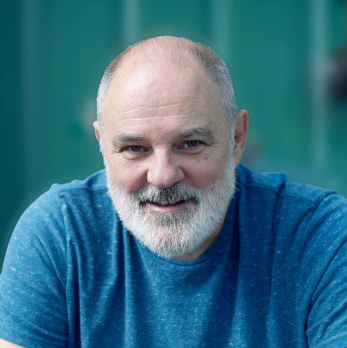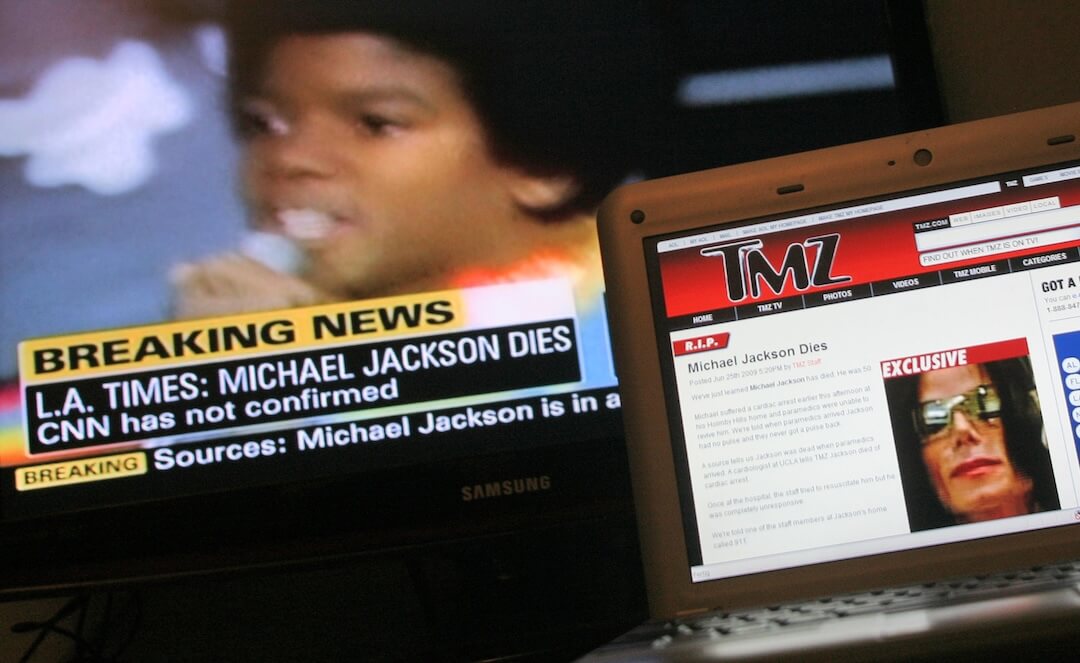Continuous news desks. 24/7 news cycles. Convergence.
Three terms that reflect the sea change in news gathering and delivery. But what does it mean at the ground level; how do reporters juggle new responsibilities while feeding the insatiable maw of the news machine? Those are questions newsroom leaders and their staffs confront daily.
In February and March I came upon what I consider an ideal illustration of current journalism that might answer some of these questions: The I. Lewis “Scooter” Libby trial. Day by day, I watched Washington Post reporter Carol D. Leonnig cover the story. She seemed omnipresent.
During the day she contributed to a running series of online updates on washingtonppost.com. In the evening, I saw her again on “The News Hour with Jim Lehrer,” fielding questions with savvy and grace. And then in the morning, there she was in print — on the paper’s front page.
Early last month, I contacted Leonnig. I didn’t know her, but in an e-mail I wrote: “I hope you might be able and willing to share your experience and insights about what seems the essence of what’s being called multi-platform news delivery on display in your Libby trial coverage.” Busy as she was, she responded quickly: “The subject you raise with me — about the multi-platform element of journalism these days — is actually one that has recently been both very intriguing and disconcerting to me. So I’m glad, even if I’m the illustration of it, that you are focusing on this trend in the business that can make news purveyors so vital and yet so thinly stretched.”
Leonnig generously agreed to field questions by e-mail.
Our conversation follows:
 How does the journalism you practice today differ from what you did when you first got into the business?
How does the journalism you practice today differ from what you did when you first got into the business?
 In the 18 years since I got my first “real” reporting jobs (first as a correspondent in [The Philadelphia Inquirer‘s] South Jersey bureau and shortly after as staff writer for The Charlotte Observer), much has changed in the nature of how I do my work. First, due to the omnipresence of BlackBerries, cell phones and the Internet, and the endless press of the 24-hour cable news cycle, there is no clear end or beginning of the work day. Early in my career, I might propose a story to my editors by mid-morning, work all day calling people and getting information, then file the most complete story I could by about 7 pm, and unless something amazing changed the story, that is the account that appeared in the morning paper. Stunningly, back then, this was the first time many of my readers learned this information.
In the 18 years since I got my first “real” reporting jobs (first as a correspondent in [The Philadelphia Inquirer‘s] South Jersey bureau and shortly after as staff writer for The Charlotte Observer), much has changed in the nature of how I do my work. First, due to the omnipresence of BlackBerries, cell phones and the Internet, and the endless press of the 24-hour cable news cycle, there is no clear end or beginning of the work day. Early in my career, I might propose a story to my editors by mid-morning, work all day calling people and getting information, then file the most complete story I could by about 7 pm, and unless something amazing changed the story, that is the account that appeared in the morning paper. Stunningly, back then, this was the first time many of my readers learned this information.
These days, I can get called by my desk any hour up until midnight — or even 1 a.m., in rare cases — with questions and requests for updates on a story I filed and refiled a couple times earlier that day. Readers often know some part of the story before the paper shows up on their doorstep, and we are on a mission to give them something fresh, new and more authoritative than what they’ve heard already on radio or TV.
I now sometimes propose a story to my editor the night before — timed to a news peg the next day — and put a short version of it on our Web site by 11 a.m. the next morning so it will be there in time for a crush of lunchtime Web site viewers. I may update it for the Web again that afternoon, or not, depending on how “hot” the subject is. It used to be that we held “exclusive” stories, or scoops, for the morning paper. Now we sometimes break our exclusive stories on the Web site in the middle of the day, when it has its largest number of “eyeballs.”
 What was the impetus for filing to the Web during the day? How did you manage that? (I noticed two bylines on Web posts; did you divide the tasks with another reporter?)
What was the impetus for filing to the Web during the day? How did you manage that? (I noticed two bylines on Web posts; did you divide the tasks with another reporter?)
 The Libby trial was the kind of story that we knew would have enormous interest for Washington Post readers and Web site viewers. Not only did it center to some degree on the Bush administration’s initial justification for an increasily unpopular war with Iraq, it also involved high-profile power players in the government who don’t generally divulge a lot on the record, not the least being the vice president. The case also shone a spotlight on prominent journalists, and how they did their jobs of gathering information from the controlled message-handlers of the White House. Viewers clicked onto our site to get minute-to-minute updates on new testimony. And indeed, the trial — through witnesses and exhibits — provided numerous rolling revelations throughout each day about how the White House, CIA and State Department engaged in an ugly behind-the-scenes battle of fingerpointing in 2003 over the Iraq war and crafted a plan to rebut a war critic then dominating the news.
The Libby trial was the kind of story that we knew would have enormous interest for Washington Post readers and Web site viewers. Not only did it center to some degree on the Bush administration’s initial justification for an increasily unpopular war with Iraq, it also involved high-profile power players in the government who don’t generally divulge a lot on the record, not the least being the vice president. The case also shone a spotlight on prominent journalists, and how they did their jobs of gathering information from the controlled message-handlers of the White House. Viewers clicked onto our site to get minute-to-minute updates on new testimony. And indeed, the trial — through witnesses and exhibits — provided numerous rolling revelations throughout each day about how the White House, CIA and State Department engaged in an ugly behind-the-scenes battle of fingerpointing in 2003 over the Iraq war and crafted a plan to rebut a war critic then dominating the news.
The Post decided that, given our audience’s interest in the story, it would be impossible for just one reporter to both keep track of what was happening in the court and simultaneously file timely stories for the Web. So the editors asked another reporter to join me in trial coverage, and we then divided up responsibilities each day, depending on the subject matter and the relative crush of news. Typically, one reporter would take the lead writing a morning Web story with a short midday update if needed, and the other would take the lead in writing an afternoon update and the final overarching story for the next day’s paper. When one of us was actively writing, the other would keep tabs on crucial quotes from court testimony or type up context for the other’s file.
News development came fast and furious at times. For example, one morning we were writing about a CIA officer detailing how Libby asked him during a morning intelligence briefing for information about Joe Wilson. But that same afternoon, we were writing an entirely new Web story about a Cheney aide’s testimony that the vice president dictated talking points to her about how to deal with the Wilson controversy.
 Why did you appear on “The News Hour”? Had you already started writing your next-day story? I was always struck by your calm and comprehensive reports. Had you received any training in broadcast reporting?
Why did you appear on “The News Hour”? Had you already started writing your next-day story? I was always struck by your calm and comprehensive reports. Had you received any training in broadcast reporting?
 The demand for reporters to appear on television, radio and online chats is certainly one of the major changes in this business since I became a journalist. I sometimes have to stop and take a [look] at the whirling assortment of in-house and external media for whom I’m reporting throughout the day on a breaking story, even as I am still literally trying to nail down the story that will appear in the paper the next day. My paper has a fabulous team on the television/radio assignment desk whose primary job is fielding calls from television and radio stations looking for reporters who are experts in certain fields and booking us to appear on air to comment on breaking news. Part of our reason for appearing is to remind viewers of the kind of exclusive and authoritative reporting that they can sometimes only get from The Washington Post.
The demand for reporters to appear on television, radio and online chats is certainly one of the major changes in this business since I became a journalist. I sometimes have to stop and take a [look] at the whirling assortment of in-house and external media for whom I’m reporting throughout the day on a breaking story, even as I am still literally trying to nail down the story that will appear in the paper the next day. My paper has a fabulous team on the television/radio assignment desk whose primary job is fielding calls from television and radio stations looking for reporters who are experts in certain fields and booking us to appear on air to comment on breaking news. Part of our reason for appearing is to remind viewers of the kind of exclusive and authoritative reporting that they can sometimes only get from The Washington Post.
My paper also now has its own radio station where I and my colleagues are asked to provide a recap or analysis of breaking news stories we’re covering. It’s pretty amazing how often I may be on my cell phone trying to pry information from a source during the day, and simultaneously juggling requests from the radio/TV desk to talk on air later in the day about my still-unwritten story. Add to that how often reporters are asked to do online chats on our Web site about big stories which they wrote and which ran in that day’s paper, and you get a sense of how quickly a day can whiz by!
Even before the Libby trial began, the paper’s TV/radio desk began getting calls asking me to appear on C-SPAN, FOX News, NPR, “News Hour” and others to talk about the case. Over the course of the trial, I somehow gelled with “News Hour.” Their correspondents and anchors ask good, probing questions and, given the relative time constraints of television, they had time to explore the highlights of the case beyond the fairly simplistic sound bites — e.g “Cheney spokesman says VP gave her talking points to deal with war critic,” or “Libby says he forgot details of reporter conversations in crush of job.”
Your compliments about my calm demeanor are very kind. I have had no training in broadcast reporting, but when I sit in the studio chair I usually have one old chestnut in my mind: Tell it like you would tell it to Mom.
It’s so easy to boil down the drama of each day in court if you think about what struck you as a person, and what you thought was a big deal. And strangely enough, this exercise did help me on some particularly chaotic and demanding trial days. I had begun a draft usually by 4 p.m., and had a top by the time I went on the News Hour, but I was nowhere close to being finished. So sometimes talking on air about the sweep of what happened gave me some clarity about how to improve the lede or nut graph.
Two different broadcasts stick in my mind, one significant and one humorous.
In the first instance, I was reminded of people who complain that news stories don’t fully represent the event they themselves witnessed. Here I was covering a long day of trial, and I saw how one powerful moment can eliminate the need to talk about anything else. That day, prosecutor Patrick Fitzgerald obliterated two long hours of a defense witness’ testimony with just two questions. The witness, an aide to Libby, testified for much of the morning about how frighteningly busy Libby was at work and the dozens of national security matters he juggled each day that would surely prevent him from remembering conversations with reporters about such insignificant matters as a war critic. But Fitzgerald, in four minutes, got the aide to acknowledge that if Libby spent two hours on something in that busy time period, it would have been important enough for Libby to remember. And during that period, Libby had spent two hours at a hotel dining room discussing that war critic with New York Times reporter Judy Miller.
My funny memory is of another busy trial day when I was rushing over in a cab from the courthouse to the TV studio, and literally had not brushed my hair all day. According to my smiling “News Hour” handlers, my summary of the day’s highlights was beautifully delivered, but my disheveled hairstyle was a tad distracting. Oh well.
 When and how did the writing of the next day’s print story take place?
When and how did the writing of the next day’s print story take place?
 It really depended on when the big news of the day unfolded. If it came early, one of us would write a Web story quickly and other would know to start interviewing experts on the import of the revelation and get cracking on an afternoon Web story with updates. And that really formed the base for an early draft of the print story. The print writer for that day would have the benefit of a lot of b-matter from the Web story. But on many more days than was healthy, the biggest news would break in the afternoon and force one of us to dump the Web story entirely, and rewrite the print story almost from scratch. As our lead editor said, we were often writing and editing three 30-inch stories every day.
It really depended on when the big news of the day unfolded. If it came early, one of us would write a Web story quickly and other would know to start interviewing experts on the import of the revelation and get cracking on an afternoon Web story with updates. And that really formed the base for an early draft of the print story. The print writer for that day would have the benefit of a lot of b-matter from the Web story. But on many more days than was healthy, the biggest news would break in the afternoon and force one of us to dump the Web story entirely, and rewrite the print story almost from scratch. As our lead editor said, we were often writing and editing three 30-inch stories every day.
 How do you think the juggling of Web, broadcast and print versions of the running story affected the quality of your performance?
How do you think the juggling of Web, broadcast and print versions of the running story affected the quality of your performance?
 It can make me feel stretched, and even scattered at times, especially in the case of this national breaking story. On the other hand, as I said earlier, working in so many different media has tended to make me clarify the central nugget of the day’s story. What is the big take-away? And the transition in the course of a day from Web to print versions can also force reporters to think earlier in the day about the big questions readers will want answered, and also spot potential holes or flawed logic. Of course, another down side is that you don’t have a lot of free time to explore optional reporting that may or may not prove important. And I admit I’m shocked that we don’t have more errors given the rapid pace. I made a few dumb, but luckily small, mistakes which I should have caught.
It can make me feel stretched, and even scattered at times, especially in the case of this national breaking story. On the other hand, as I said earlier, working in so many different media has tended to make me clarify the central nugget of the day’s story. What is the big take-away? And the transition in the course of a day from Web to print versions can also force reporters to think earlier in the day about the big questions readers will want answered, and also spot potential holes or flawed logic. Of course, another down side is that you don’t have a lot of free time to explore optional reporting that may or may not prove important. And I admit I’m shocked that we don’t have more errors given the rapid pace. I made a few dumb, but luckily small, mistakes which I should have caught.
 It was my impression that your days must have been grueling during the trial. How long were they?
It was my impression that your days must have been grueling during the trial. How long were they?
 Absolutely grueling. I needed to be in court most days by about 8:30 a.m. and the team was finishing up editing the final story at 8 p.m. on the best nights, 10 p.m. on the worst. I have two little girls and I had so little time with them during the trial. A half hour a day was a big treat.
Absolutely grueling. I needed to be in court most days by about 8:30 a.m. and the team was finishing up editing the final story at 8 p.m. on the best nights, 10 p.m. on the worst. I have two little girls and I had so little time with them during the trial. A half hour a day was a big treat.
 Was this the first time you juggled so many roles for a story? What advice would you give other journalists who are asked to do multi-platform reporting?
Was this the first time you juggled so many roles for a story? What advice would you give other journalists who are asked to do multi-platform reporting?
 This isn’t the first time I’ve juggled this many roles — but it surely was the most intense multi-platform experience I’ve had, because this was the first time I had to juggle all of them for more than two months straight and under such unrelenting demand from the various media wanting a Washington Post reporter’s two cents.
This isn’t the first time I’ve juggled this many roles — but it surely was the most intense multi-platform experience I’ve had, because this was the first time I had to juggle all of them for more than two months straight and under such unrelenting demand from the various media wanting a Washington Post reporter’s two cents.
My advice would be to seek out a partner and develop a healthy working relationship if you’re going to sign up for this kind of extended high-profile story. A good partnership will protect you from getting tunnel vision and from going crazy. I also had a very patient editor who listened when I vented about being overwhelmed, and often proposed some smart triage.
I suppose my nagging fear is that my trial experience portends what could be the future of reporting more mundane or everyday news. I think it would be physically and mentally difficult to keep up that pace — and maintain accuracy and authority — if each journalist individually had to juggle all those media demands in this intense, multi-platform way every day. News staffs are shrinking, not expanding, so how will everybody juggle at the same time?
 Did you get any additional pay, overtime, comp time or any other remuneration, either from the Post or the TV outlets you appeared on during the Libby trial?
Did you get any additional pay, overtime, comp time or any other remuneration, either from the Post or the TV outlets you appeared on during the Libby trial?
 Many of the television programs, and some of the radio programs, pay varying fees to those appearing as guests on their show. To me, the Web work is increasingly just a part of the daily job, as much as it can feel like a second job on some busy days.
Many of the television programs, and some of the radio programs, pay varying fees to those appearing as guests on their show. To me, the Web work is increasingly just a part of the daily job, as much as it can feel like a second job on some busy days.
 Do you think changes need to be made in compensation mechanisms in a “multi-platform world,” and if so, what? Or is this just workplace reality in the 21st century.
Do you think changes need to be made in compensation mechanisms in a “multi-platform world,” and if so, what? Or is this just workplace reality in the 21st century.
 I think as these multi-platform responsibilities grow, news organizations are honestly reassessing their policies on compensating reporters for that work and the views on what’s appropriate pay are evolving. For example, our Post radio program pays a fee for early morning appearances when reporters could otherwise be sleeping or drinking their morning coffee at home.
I think as these multi-platform responsibilities grow, news organizations are honestly reassessing their policies on compensating reporters for that work and the views on what’s appropriate pay are evolving. For example, our Post radio program pays a fee for early morning appearances when reporters could otherwise be sleeping or drinking their morning coffee at home.






